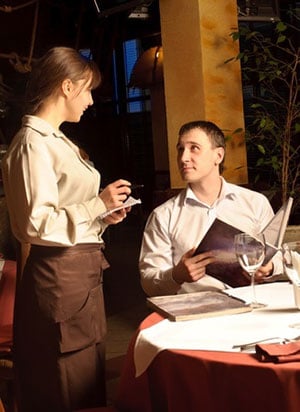 Since 1994, the National Restaurant Association has set aside September to focus on food safety issues such as cross-contamination risks, time-temperature control and hygiene.
Since 1994, the National Restaurant Association has set aside September to focus on food safety issues such as cross-contamination risks, time-temperature control and hygiene.
Whether you are a chef, kitchen manager or just someone who loves to cook, this month is a perfect opportunity to stop and consider all of the innovative ways to create (and improve!) your specialty dishes.
So how about celebrating National Food Safety Month by adding some sous vide recipes to your collection?
What is Sous Vide?
Sous vide is a French-originated style of cooking where food is vacuum-sealed in high grade plastic and cooked in a water or steam bath— most typically by using an immersion circulator. It may take longer for the food to cook, but, as with most low and slow techniques, it’s well for the wait.
Sous vide helps you achieve the impossible, especially when it comes to meat.
Meat must cook to a specific temperature to be safe. Once you achieve that required level with traditional techniques such as grilling or pan frying, half the cut is overcooked.
Cooking sous vide allows for precision control over temperature, which means you get an even heating environment that ensures meat is thoroughly cooked while trapping and enhancing all of the natural flavors of a dish. And because you cook so slowly with sous vide recipes, meat is tender and moist throughout.
You get a final product cooked to perfection without the risks associated with undercooking.
Seasoning Your Steak
This is where you get to have a little fun and maybe create a signature dish. Every chef has their own special seasoning tricks for beef. But, with sous vide, you don’t need much to bring out the meat’s natural flavors. A healthy dash of kosher salt and a little fresh ground pepper before vacuum packing the meat is enough to enhance the flavor as it cooks.
Your Basic Sous Vide Steak
This sous vide method will work for any steak recipe. You can adjust the cooking time or temperature to get the level of doneness you (or your diners) prefer, but the general rule of thumb is:
- 129 degree F for rare
- 135 degrees F for medium-rare
- 140 degrees F for medium
- 147 degrees F for medium-well
- 158 degrees F for well-done
Once you’ve reached the desired temperature, vacuum pack the steak and place it in the water bath. Larger steaks, around 2-inches thick, will take several hours. Don’t worry about overcooking the meat. As long as you keep the water temperature consistent, a few minutes extra cooking time won’t dry out your steak.
The Finishing Touch
Once, the steak cooks to the proper temperature, remove it from the water and open the bag. Your goal now is to sear the steak, so the outside is crispy, because the inside is already cooked.
When you are ready to sear, add one tablespoon of butter or vegetable oil to the bottom of a skillet and pan-sear it in the natural juice from the bag. Alternatively, you could use a torch to get the perfect crispy char on the outside to seal in flavor.
Adding a Final Layer of Flavor
Try mixing up a special flavored butter to top off the seared steak. As it melts, the seasoning will soak into the surface. Serious Eats offers a recipe for a parsley butter that works well with the sous vide cooking technique. Mix together:
- 4 sprigs of thyme
- 2 tablespoons of chopped parsley
- 6 tablespoons unsalted butter
- 1 minced garlic clove
- 1 teaspoon of zest from a lemon
Once your meat is seared, top each steak with a dollop of the butter before serving.
Sous vide works well for any cut of beef (or other meat), but it is especially effective for finicky cuts like chuck roast, brisket or rump roast. It is an easy technique to master and one that’s difficult to get wrong.







